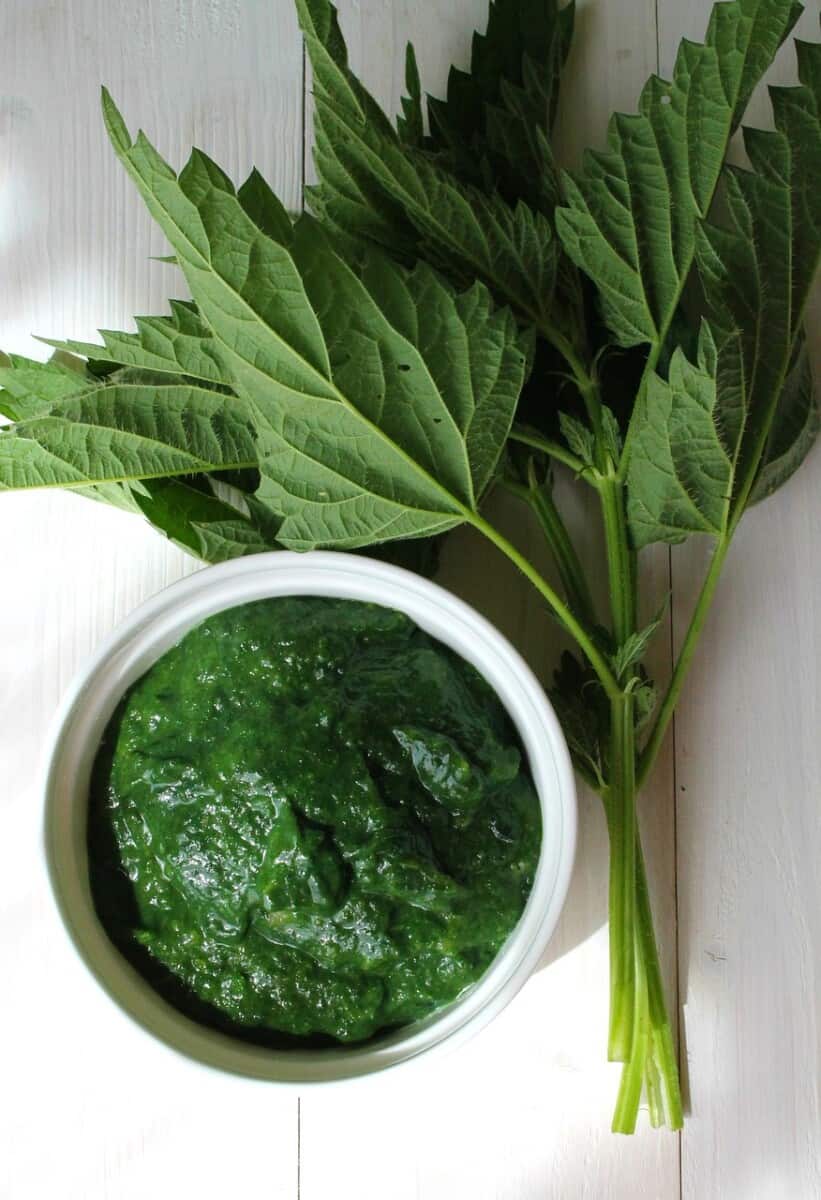What is magnesium?
Magnesium is a mineral in the body that:
- Helps to maintain a constant heart rate
- Helps to maintain normal muscle and nerve function
- Together with other minerals strengthens bones and teeth
- Helps you stay healthy
The best way to add magnesium to your diet is through a variety of foods. You can also get magnesium as a supplement orally (by mouth) or intravenously (intravenously (IV), through a vein).
Low levels of magnesium in the body can be caused by
- Chronic (prolonged) or profuse vomiting or diarrhea (loose or watery stools)
- Problems with the absorption of nutrients in the stomach or kidneys
- Insufficient consumption of foods containing magnesium
Taking certain medications, such as diuretics (diuretics), antibiotics, thyroid medications, proton pump inhibitors, or chemotherapy medications, as this can increase the amount of magnesium excreted in the urine.
Benefits Of Magnesium
It’s not a secret for anyone that during cooking, especially during heat treatment, many useful substances are lost. The same is true for magnesium. When processing and grinding cereals, up to 80% of magnesium is lost, and during heat treatment and freezing of products – about 40-50%. It is washed out of vegetables during cooking, and especially a lot is lost when peeling – after all, a large amount is contained in the peel.
An additional source of magnesium and a good alternative to the cake can be dried fruits – raisins, dried apricots, dates, prunes. There is a lot of this trace element in asparagus and spinach – these products may be unusual for our menu, but they are quite affordable. Look for magnesium in nuts and seeds, wheat bran, beans, green apples, lettuce, and bell peppers. It is also found in dairy products, cocoa powder, bananas, avocados, and cereals.
How To Maximize Magnesium Absorption From Cooking
During cooking, vegetables must be completely covered with water, and the lid must be closed – otherwise excess oxygen gets into the broth, which destroys many vitamins and nutrients.
For the same reason, you should not add cold water when boiling. When adding frozen vegetable mixture to soup, do not defrost it first. And remember that the less the vegetables spend in the water, the more benefits they will bring.
One of the healthiest and healthiest processing methods is a double boiler. It does not expose food to too high temperatures – for example, baking in the oven usually occurs at a temperature of 250-300 degrees, while in a double boiler it is maintained at about 100 degrees.
Food cooked in a double boiler retains the maximum amount of vitamins and minerals, including magnesium. With this “sparing” method, only 1-3% of nutrients are lost.
Also, meat, fish and vegetables are juicy due to the “sealing” of the surface of the food with steam and do not lose much liquid. A similar method will help those who are on a diet – dishes cooked with steam contain less unhealthy fats than those that were fried or baked.
What Vegan Food Contain Magnesium
Eating foods that contain magnesium can increase the amount in the body. Eating a variety of whole grains, legumes (such as peas and beans), and dark green leafy vegetables daily will help you get your RDA for magnesium.
You can also get magnesium by drinking water. Water, including tap, mineral and bottled water, can contain up to 120 mg of magnesium, depending on the manufacturer of the water and its place of origin. The table below lists the food items with the amount of magnesium in each.
Magnesium is an essential micronutrient that the body needs to maintain normal muscle and nervous system function, maintain a healthy immune system, maintain heart rate, and keep bones strong. Magnesium is involved in 300 biochemical reactions in the body.
Lack of magnesium can lead to muscle cramps, cardiovascular disease, diabetes, high blood pressure, nervous system disorder (which results in depression, insomnia, irritability, decreased concentration), migraines, low blood sugar, joint pain, osteoporosis and cerebral infarction. Consuming excessive amounts of magnesium tends to cause diarrhea as the body tries to expel excess.
Foods high in magnesium include
- Green vegetables
- Nuts
- Seeds
- Beans
- Whole grains
- Avocados
- Bananas
- Dried fruits
- Dark chocolate
RDA of Magnesium is 400 mg for most adults
Magnesium is quickly flushed out of the body by excessive amounts of oxidizing calcium (found in, say, milk) as the two “vie” for absorption by the body.
Vegan Food High In Magnesium
Laminaria
Laminaria (also known as kelp) contains more magnesium than any other vegetable or seaweed: 780 mg per serving. In addition, kelp is very rich in iodine, which is beneficial for prostate health.
This seaweed has a wonderful cleansing effect and smells like the sea, so kelp can be used to replace fish in vegan and vegetarian recipes.
Laminaria is rich in natural sea salts, which are the most abundant sources of magnesium known. You need to be cautious however as you can have too much magnesium. This can put your kidneys under strain and so eat kelp in a balanced diet.
Oats
Oats are abundant in magnesium. It is also an excellent source of protein, fiber, potassium.
Almonds & cashews
Almonds are one of the healthiest nut varieties; it is a source of protein, vitamin B6, potassium and magnesium. Half a cup of almonds contains approximately 136 mg, which beats stool and even spinach.
Cashews also contain large amounts of magnesium – about the same as almonds – as well as B vitamins and iron.
Cocoa
Cocoa contains more magnesium than most fruits and vegetables. The amount of magnesium in cocoa varies from brand to brand.
Besides magnesium, cocoa is rich in iron, zinc and high amounts of fiber. It has powerful anti-inflammatory properties.
Seeds
Hemp, white chia (Spanish sage), pumpkin, sunflower are the best sources of magnesium in the kingdom of nuts and seeds. One glass of pumpkin seeds fully provides the body with the amount it needs, and three tablespoons of hemp seed protein provides 60% of the daily value.
White chia and sunflower seeds contain approximately 10% of the daily values (DV).
Magnesium Quantity In Vegan Food
Raw Spinach
- Magnesium per 100g – 79mg (20% DV)
- 1 cup raw (30g) – 24mg (6% DV)
- 1 cup cooked (180g) – 157mg (39% DV)
Other vegetables rich in magnesium
- Swiss chard (38%)
- Cabbage (19%)
- Turnips (11%)
Zucchini, Pumpkin Nuts & Seeds
- Magnesium per 100g – 534mg (134% DV)
- 1/2 cup (59g) – 325mg (81% DV)
- 1 oz (28g) – 150mg (37% DV)
Other magnesium-rich nuts and seeds for magnesium DV
- Sesame seeds (63%)
- Brazil nuts (63%)
- Almonds (48%)
- Cashews (44%)
- Pine nuts (43%)
- Peanuts (31%)
- Pecans (17%)
- Walnuts (16%)
Beans & Lentils (Soybeans)
- Magnesium per 100g – 86mg (22% DV)
- 1 cup cooked (172g) – 148mg (37% DV)
Other legumes high in magnesium (DV % for each cup of cooked food)
- White beans (28%)
- French beans (25%)
- Asparagus beans (23%)
- Common beans (21%)
- Chickpeas (garbanzo) (20%)
- Lentils (18%)
Whole Grains (Brown Rice)
- Magnesium per 100g – 44mg (11% DV)
- 1 cup cooked (195g) – 86mg (21% DV)
Other magnesium-rich whole grains (DV % for each cup cooked):
- Quinoa (30%)
- Millet (19%)
- Bulgur (15%)
- Buckwheat (13%)
- Wild rice (13%)
- Whole wheat pasta (11%)
- Barley (9%)
- Oats (7%)
Avocado
- Magnesium per 100g – 29mg (7% DV)
- 1 avocado (201g) – 58mg (15% DV)
- 1/2 cup puree (115g) – 33mg (9% DV)
Typically, an average avocado contains 332 calories, half a cup of mashed avocado contains 184 calories.
Bananas
- Magnesium per 100g – 27mg (7% DV)
- 1 medium (118g) – 32mg (8% DV)
- 1 cup (150g) – 41mg (10% DV)
Dry Figs
- Magnesium per 100g – 68mg (17% DV)
- 1/2 cup (75) – 51 mg (13% DV)
- 1 fig (8g) – 5mg (1% DV)
Other magnesium-rich dried fruits (% RDA for 1/2 cup)
- Prunes (11%)
- Apricots (10%)
- Dates (8%)
- Raisins (7%)
Dark Chocolate
- Magnesium per 100g – 327mg (82% DV)
- 1 slice (29g) – 95mg (24% DV)
- 1 cup (132g) grated chocolate – 432mg (108% DV)
| Food High In Magnesium | Other Foods In this Group | % Of Magnesium (Per 100 grams) |
| Raw Spinach | Swiss Chard, Turnips, Cabbage | 20% |
| Zucchini, Pumpkin Nuts & Seeds | Sesame seeds, Brazil nuts, Almonds, Cashews, Pine nuts, Peanuts, Pecans, Walnuts | 134% |
| Beans and lentils (soybeans) | White beans, French beans, Asparagus beans, Common beans, Chickpeas (garbanzo), Lentils | 22% |
| Whole Grains (Brown Rice) | Quinoa, Millet, Bulgur, Buckwheat, Wild rice, Whole wheat pasta, Barley, Oats | 11% |
| Avocado | NA | 7% |
| Bananas | NA | 7% |
| Dry Figs | Prunes, Apricots, Dates, Raisins | 17% |
| Dark chocolate | NA | 82% |
Conclusion
Magnesium is very important for your body. It is mostly found in plant based food, so vegans don’t really have problem getting this vitamin. The main thing is to keep track of what you eat, drink water and follow our tips about magnesium absorption.

